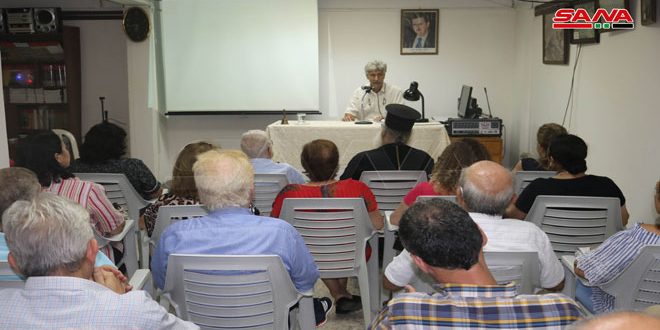The ancient city of Dura-Europos … the meeting point of geography and civilizations over thousands of years
The archeological site of Dura-Europos today known as ( Salihiyya of the Euphrates ) , which is located southeast of Deir Ezz-Zour on the west bank of the Euphrates, is a fascinating crossroads of geography and cultures in the history of Syria over thousands of years.
“This ancient city received the Carlo Scaria International award for the most beautiful Archaeological Sites for the year 2010, because the archaeological city at that time was rich in various cultures during the different historical periods” according to the archaeological researcher Dr. Bassam Jamous .
Dr. Jamous gave a detailed explanation of the city’s peculiarity in a lecture entitled “Dura -Europos, Euphrates Basin” at the invitation of the Al-Adiyat Association in Lattakia.
The archaeologist said that its name Dura in the Assyrian language denotes “dwelling or fortress.” And the word Europos is a Greek one to become Dura Europos in the third century during the reign of the Emperor Caracalla in 208 AD and “Salihiyya of the Euphrates” during the era of Salah Eddin al-Ayyubi.
Among the many important archaeological discoveries in the city , which was discovered by chance while digging trenches to build military forts for an English detachment in 1920 on the site, were full-size statues, long clothes, conical hats, and the remains of a Palmyra temple decorated with frescoes dating back to the Hellenistic and Roman eras.
The city was re-established during the reign of Seleucus I 312/281 B.C as Dura was mentioned as a military center to protect the borders. It was also considered, due to its location on the Euphrates, an important commercial port in view of its trade lines with Palmyra, the internal and external kingdoms, and the Mediterranean basin.
Dr. Jamous explained that the city symbolized “Hellenic, Roman, Parthian, Achaemenid, and Sassanid” identities, which was reflected on the diversity of the archaeological finds.
He indicated that the city has a chess plan, “the Hellenistic model of cities” surrounded by two external and internal walls and four towers, with an area of 73 hectares and divided into eight successive streets at angles.
The archaeologist added the houses in the city were between 3 and 4 floors, and the castle, which was built in it, overlooked the Euphrates river and had 3 gates. It also contained a round theatre, a public square for activities, and various places of worship.
The discoveries indicate that Dura-Europos had a royal system of government, with a judiciary, court, and policemen. It witnessed marriage and divorce according to legal contracts. The social life of the ancient city included several social categories , while its religious life revolved around the gods and temples that were in ancient Syria.
The end of Dura Europos , according to Dr.Jamous , came by the Sassanids during their conquests, which led to the lose of its independence in 256 AD.
Rawaa Ghanam

